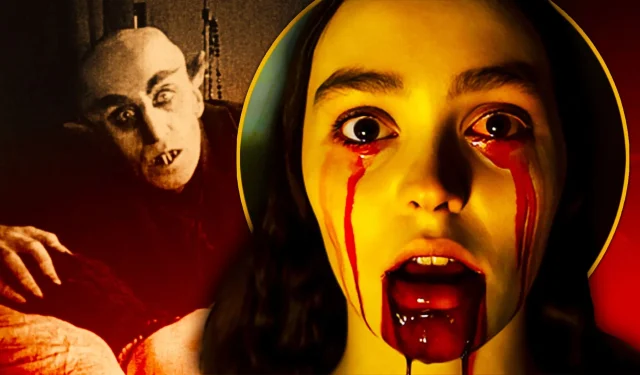
This article contains spoilers for Nosferatu.
Renowned filmmaker Robert Eggers has embarked on a compelling journey back to the haunting world of Nosferatu. This venture marks a full-circle moment for Eggers, who first faced the iconic story as a high school student both in the director’s chair and as a performer. After years of anticipation, he is ready to unveil his take on the classic silent film, opting for a remake rather than a direct adaptation of Bram Stoker’s famous novel, Dracula.
The original 1922 film, titled Nosferatu: A Symphony of Horror, introduces audiences to Count Orlok—a centuries-old vampire captivated by the wife of a real estate agent. Bill Skarsgård takes on the role of Count Orlok in this latest rendition, which Eggers believes adds a unique layer to the already rich narrative.
Why Robert Eggers Chose to Remake Nosferatu
In a recent conversation with Screen Rant, Eggers elaborated on his motivations for choosing a remake over a straightforward adaptation of Stoker’s work. Although he holds a deep admiration for the novel, he identified it as “overstuffed with Victoriana.”He finds Murnau’s adaptation resonates more as a streamlined fairy tale, allowing for a richer narrative exploration.
I mean, as much as I love the novel, it is a little bit overstuffed with Victoriana. I think something about the Murnau adaptation is just a simple fairy tale. I actually think that simple fairy tale that is at the core of the Stoker novel is the thing that has made it so adaptable and so versatile and kept people so inspired over the past century.
Something that I really loved about the Murnau film is that it ends with the female protagonist being the heroine. I thought that it would be potentially more exciting if the whole film is told through her eyes, because it had the potential to be more emotionally and psychologically complex than an adventure story about a real estate agent. As much as it is a scary horror movie, and it is, there’s even jump scares, it is a gothic romance, and it’s a tale of love and a tale of obsession.
Through her eyes, I think we can really get into that mode more without it becoming the tragic anti-hero story of a lovelorn vampire, which I’m also less interested in.
The Impact of Nosferatu on Horror Cinema
The historical interplay between Stoker’s iconic novel and Murnau’s silent film has been a fascinating one. Initially an unofficial adaptation, Nosferatu faced legal battles that led to the destruction of most copies. Fortunately, a few survived, and over time, it has solidified its place as a cornerstone of horror cinema, repeatedly inspiring filmmakers throughout the decades. In fact, it recently topped a 2024 ranking of Dracula adaptations by Screen Rant.
Eggers’ distinct favoring of Nosferatu over Dracula reflects his commitment to deep narrative exploration. By shedding the socio-political complexities steeped in the Victorian age, he aims to uncover the inherent dark fairy tale elements within Stoker’s narrative. This approach is expected to yield a compelling rendition of both Nosferatu and Dracula, designed to resonate with contemporary audiences.
Our Perspective on Eggers’ Choice
As a fan of cinematic portrayals of the vampire mythos, I find that Francis Ford Coppola’s opulent interpretation of Stoker’s novel remains one of my favorites, expertly blending melodrama with gothic romance. This nostalgia for dramatic adaptations contrasts with Eggers’ approach, which seeks to highlight the horror and folklore lost in the decades of adaptations—more than thirty to date.
Eggers’ version of Nosferatu promises to shift focus away from the Victorian trappings that often overshadow the narrative. Instead, it aims to delve into the unsettling yet seductive aspects of its characters, particularly Nosferatu’s intense fixation on Ellen, leading to a raw, primal love story that prioritizes emotional depth and character psychology.
By revisiting Nosferatu through this lens, Eggers crafts a dark fairy tale that fuses horror and allure, invigorating the genre with a fresh interpretation that speaks to both classic and modern sensibilities.




Leave a Reply